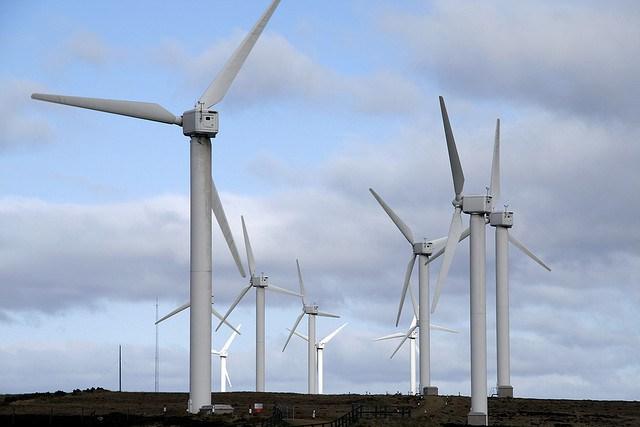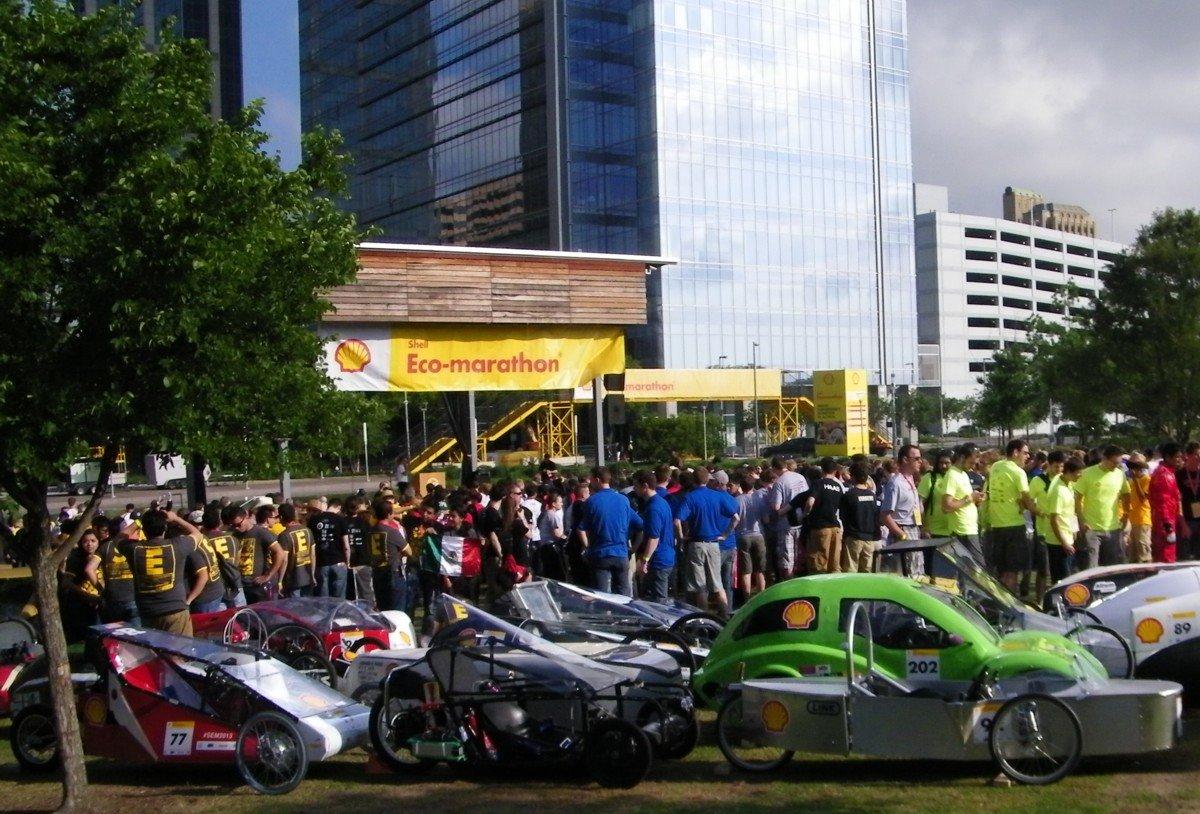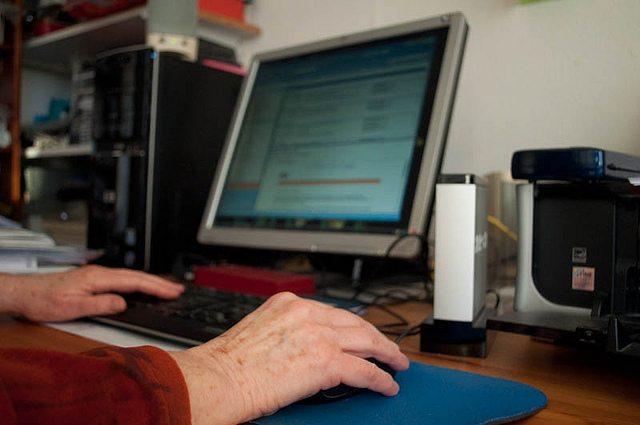5 Lessons in Sustainable Apparel from Mata Traders


By Maureen Dunn
I’ll never forget the skeptical look on Manjula’s face as I explained that a skirt above the knee would sell in America. I was her first foreign buyer, and she was accustomed to the more modest hemlines of Indian fashion. That was my entrance into the fair trade community, a global movement committed to transparency in supply chains and ending poverty through equitable trading relationships.
Here’s the backstory. My two best friends and I developed a severe case of wanderlust and found ourselves traveling the world, saving up again, and traveling some more. In order to support my habit, I decided to start a little business, buying things on my travels to then take home and sell. Leather sandals, antique tapestries, colorful bangles, you name it. I was in India buying in the local markets, and I started to question who was making my goods and how much they were being paid. I’d heard about fair trade, and once I looked into it I realized there was a better way to do business. I sought out fair trade cooperatives so I could meet the people who made my products and work directly with organizations making a positive impact on the grassroots level. Soon I not only had unique handmade products, but I also had what felt like a new family with the co-op women I worked with.
Mata Traders now partners with several women’s cooperatives in India and Nepal that train, employ, and empower hundreds of women in marginalized communities. This is what we love about working with them:
Services and education
The cooperatives are not your standard workplaces. In fact, they equal social service agencies in the support they provide to end the cycle of poverty for the women and their families. Health care, daycare and scholarships for the women’s children, paid maternity leave, retirement pensions, vision testing: all part of the membership package. Social workers on staff assist the women in addressing their personal needs, from opening a bank account to situations of domestic violence and dealing with HIV/AIDS.
There are regular workshops on topics like hygiene and nutrition, reproduction and parenting, and even taboo subjects like child sex abuse. The groups offer literacy classes and computer training, and I’ve seen this educational piece really make a difference. Sidhama told me that before the co-op, she never rode buses because she could not read the bus numbers. Now she travels around Mumbai by bus without problem. The co-ops empower the women to navigate their own lives, quite literally!
Meaningfulness of the work and social mobility
This is what we feel is most special about our products. Our garments are individually stitched in small workshops, with one seamstress creating an entire garment rather than repeating the same small action over and over again in a factory production line. Many Mata styles are then carefully finished with hand embroidery in the women’s own homes. Every year when we visit the groups, we take a big stack of our catalogs to show them.
The women eagerly gather around, proudly pointing out the styles they themselves stitched. To get to where they are now, stitching entire garments to exact specifications, the women have put in a lot of work. Their training starts with hand sewing buttons and dolls before moving on to simple machine patterns, like bags, and eventually mastering the sewing machine. If they show leadership skills they can become head of their sewing group or get promoted to positions like trainer, quality checker, materials buyer, or assistant production manager. In a country as socially stratified as India, this type of social mobility in the workplace is a rarity.
Voice, confidence, friendships
India is a traditional society where a woman moves in with her husband’s family after marriage and doesn’t usually work outside the home. She is expected to defer to her husband and often to cover her head in the presence of men. It’s not too bold a generalization to say that upon joining the co-ops, many of the women are shy and timid and haven’t quite come into their own. That soon changes. The women form close friendships, and this environment invites them to open up and come out of their shells.
As co-op social worker Sampada explained: “First they are like, ‘meow.’ But later they are a tiger of the Center!” This newfound confidence and voice carries over into their own communities. Choti was the head of an embroidery group in her rural village. Several years ago the region was experiencing a drought and her village had no water. The villagers had appealed to local officials and been told they would get water trucked in, but weeks went by and nothing happened. Choti and the other women in her sewing group, some 200 of them, organized a protest, blocking the main road for days until, sure enough, the water trucks showed up. Choti told me that it was through the co-op that they had realized their power together and gained the confidence to stand up for themselves.
Celebrating traditional artisan skills
Admittedly, it was the textiles that inspired me to start importing. I fell in love with Indian block printing before I understood what that was; the aesthetic just grabbed me. When I first started working with fair trade cooperatives I was thrilled to find that they were sourcing artisan-made fabrics, like handwoven ikat and khadi, and the endless variety of hand block prints. We say we use old-fashioned techniques with fashion-forward design, but we are proud to help support the traditional cottage industries of weavers and block printers. Though long since surpassed by factory production, in India there are still many many families for whom this is their livelihood.
Fair wages
I guess I saved the most obvious for last. Fair trade is most known for producers getting a fair price for their goods. The women at our co-ops generally earn a living wage that considerably exceeds the local minimum wage, but they are paid per piece so not everyone earns the same amount. The benefit of this system is that it allows for flexibility in terms of hours and skill level. Some women choose to work part time, and for those who are slower sewers, they will never be fired for low productivity as they would in a factory. The women do exercise control in determining the piece rate, and as the cooperatives are member-owned organizations, they receive a share of the profits.
Something I learned right from the start was that the product’s got to sell. Since that day I asked Manjula to shorten the hemline, my goal has been to translate fair trade principles into fashion that will be successful in the mainstream marketplace. This hasn’t been without its challenges, particularly given the nature of handmade processes in a world where consumers expect factory-like consistency. Recently there has been an expansion of the scope of fair trade into the factory setting. For decades the fair trade movement has been pioneered by small farmers, artisans, and cooperatives, but the designation is now starting to be applied to privately-owned plantations and factories.
Third-party certifiers audit labor practices at these factories and often require some profits be set aside for a worker-controlled community fund. This expansion of fair trade has been met with some trepidation from loyalists who worry that the practice of fair trade will be watered down -- a very real concern. But, with over 97 percent of the American fashion market produced overseas, there are many fair traders who see this as an exciting way to bring supply chain transparency and awareness of fair trade into the mainstream. In the past year, we’ve visited some fair trade factories and are learning more about what makes a factory fair. We hope that both arms of the movement can be appreciated for their impact and at the same time recognized for their differences.
Image courtesy of Mata Traders via Facebook
Maureen Dunn is the founder and creative director of Mata Traders, a fair trade fashion label based in Chicago, IL. All you Chicagoans out there, please call your alderman to ask him/her to support the Sweatfree Community Ordinance being introduced in May.
Tiny Vermont Adds Clout to GMO Labeling Legislation


Three down and 14,454,450 to go. Vermont’s announcement last week that its legislature has passed a GMO labeling law was happy news for environmentalists in the country’s second-least populous state. It was big news for Connecticut and Maine, which have both passed laws requiring GMO labeling, once other states step forward with similar legislation. Both states stipulated that their legislation would not kick into gear until there were at least five states on board, with a minimum population total of 20 million. Vermont’s bill, however, will become law once Gov. Pete Shumlin signs it, which he is expected to do in the next few weeks.
Connecticut and Maine now only need another two states and a little less than 14.5 million residents to make the quota required to kick start their GMO labeling laws. That throws an interesting dynamic into the mix. California, the county’s largest population center, has already turned down GMO labeling (for now) per a failed proposition in 2012. The country’s next runner-up, Texas, is pretty much a no-show in this arena, since the Texas GMO labeling movement is all but dead at the moment and doesn’t appear likely to gain momentum in the immediate future. That leaves New York, the country’s third most populous state, and one with a track record for feisty fights. It is probably also the favorite pick in Connecticut, whose bill stipulates that the 20 million be located in the Northeastern United States.
With a population of 19.5 million to its credit, New York would handily cover the population deficit. Its resume for meeting contentious battles head-on, and standing up for “the little guy” wouldn’t hurt, either. The state’s current tug of war with Airbnb, which has been in a protracted battle with New York City, proves that the state isn’t shy of speaking out when necessary. And when it comes to pitting one’s self against GMO advocates, moxie and staying power count.
But size, apparently, doesn’t. Vermont, with a population of fewer than 1 million touts a long list of battles that have been equally unpopular in their day. The go-it-alone state was the first to ban slavery, the first to say yes for same-sex marriage and the first to prohibit hydraulic fracturing (fracking) within its borders.
Its legislature has also put some thought into the outcome of this legislation. It knows there will be prime ring-side seating should GMO advocates decide to sue Vermont, so the state has set aside $1.5 million for implementation and state legal fees. People can voluntarily contribute to the legal fund, and the state attorney’s office can also apply any other court settlements it wins toward the state’s defense, should it be sued. If it loses a lawsuit, the state could be looking at a tab of anywhere up to $8 million.
With around 70 percent of America’s packaged foods containing GMO, implementing a new labeling process would be challenging to say the least. And it would be expensive. The legislation also calls for manufacturers to stop labeling products as “natural” or “all natural,” phrases that has been widely criticized by environmentalists and food safety advocates because of the obscurity of their meaning. And, as many manufacturers that market in California know, creating two different labeling streams, one for states that regulate GMO disclosure and one for those that don’t, can be expensive as well.
For now, food manufacturers have until July 1, 2016 to implement new labeling procedures, or to sue the state, whichever path they elect to follow. GMO opponents are hoping for the former. But a suit against America’s second-smallest and undoubtedly boldest state could also prove to be highly unpopular. There’s something about the plight of the little guy in the ring that appeals to our softer side and inspires others to take action. Whether or not Monsanto and its supporters win the court case isn’t the issue. The impact to its reputation in a suit opposing the will of the voters, and one in which Americans have the choice to chip in their funds as well as their voices could be even more decisive to the reputation of genetically modified foods than a bill passed by the legislature of one tiny Vermont.
Image credit: Lindsay Eyink
EIA Underestimating Renewable Energy Growth, Analysis Finds


Analysis by the nonprofit research group Sun Day Campaign finds that renewable energy sources in the U.S. could reach or exceed 16 percent by 2018. That is years before the Energy Information Administration predicts the nation will reach that share of renewable sources. The EIA’s Annual Energy Outlook 2014 predicts that by 2040 renewable energy would only make 16 percent of the country’s net electrical generation. Sun Day analysis finds that renewable energy has increased from less than nine percent in 2004 to almost 13 percent in 2013.
Many rely on EIA data, including policy makers and the media. “Underestimation can have multiple adverse impacts on the renewable energy industry and, more broadly, on the nation's environmental and energy future,” said Ken Bossong, executive director of the Sun Day Campaign. By underestimating the share of renewable sources, “EIA is doing a serious disservice to the public by publishing analyses that are inherently inconsistent with its own historical data and near-term projections,” Bossong added.
Good news for wave, wind and solar energy
Sun Day Campaign’s analysis has some good news for wave energy, which cites several studies that find the recoverable energy from U.S. wave to be 1,170 terawatt hours (TWh) and tidal resources to be 66 TWh. The total U.S. electricity demand is 4,000 TWh. However, the development of wave and tidal energy practices may mean much smaller output, but if just a 10 percent extraction is reached, it would equal the output of 37 large fossil fuel plants. There is more good news: the U.S. Department of Energy is putting $16 million into developing 16 wave and tidal energy projects.
There’s reason to be optimistic about wind energy. The International Energy Agency thinks that 18 percent of the world’s electricity could come from wind power in 2050, an increase of six percent from 2009 predictions. A recently released report from MAKE Consulting predicts that the North American wind market will grow 207 percent from last year, when 2.7 gigawatts (GW) were added. This year, 8.3 GW is expected to be added. In 2013, wind energy’s share of net electrical generation was 4.13 percent. From 2007 to 2013 the amount of electricity output from wind has increased each year by an average of 22,203 thousand megawatt hours (MWh). There are 12,000 MW of new wind projects in the works, which equals 20 percent of the current capacity, according to the American Wind Energy Association (AWEA). Sun Day Campaign predicts that wind’s share of net electrical generation will increase to 4.5 percent in 2014, 5 percent in 2015 and 5.5 percent in 2016.
Solar grew by 50 percent from 2010 to 2011 and then by 138 percent in 2012 and by 114 percent in 2013. Sun Day Campaign predicts that a continued doubling of solar power generation may be possible for the next couple of years, but after that may grow in increments starting in 2016. A report titled "Commercial Rooftop Revolution" predicts that within a decade, over 35 million buildings may be generating their own solar power. Two other reports are also optimistic about solar. One report predicts that 220 GW of distributed solar PV capacity will be installed between 2013 and 2018. Another report predicts that the solar PV market will grow to $155 billion in 2018, with China being the largest market and the U.S. being the second-largest market.
Image credit: KALi
FTSE Group develops fossil fuel excluding index


FTSE Group has developed indices which will omit companes linked to ownership and/or extraction of carbon based fossil fuel reserves.
It claims that the move is ground-breaking and will pave the way to implementation of a total exclusion model for fossil fuel-linked stocks, so that excluded enterprises are removed entirely from the Index Series.
BlackRock, the world’s largest fund manager, intends to launch a solution that tracks FTSE’s new benchmark utilizing seed capital from Natural Resources Defense Council (NRDC), a not-for profit organization with 1.4 million members that works to protect the world’s natural resources, public health and environment. The Index Series has been designed with the close co-operation of BlackRock and NRDC.
The methodology behind the Index Series is based around three key exclusion criteria, is designed to be transparent, easy to understand, quantifiable and repeatable across FTSE’s Global Equity Index Series (GEIS) which covers approximately 7,400 companies that represent almost 98% of global market capitalization.
Frances Beinecke, president of the Natural Resources Defense Council, commented: “This initiative is about creating the kind of world we want to leave for the next generation. We want to move toward a world that no longer relies on dirty energy that threatens our future, damages our communities and destabilizes our climate. A fossil fuel-free future is where we see opportunity and promise, and that’s where NRDC wants to direct our financial resources.”
Picture credit: © Roger Pilkington | Dreamstime Stock Photos
Shell's Eco-Marathon Inspires a New Generation of Green Innovation


As I stood on the lawn outside of the George R. Brown Convention Center in downtown Houston, I knew I was about to see something special. I was listening to Houston Mayor Annise Parker talk about her city's track record when it comes to sustainability. Houston, the town through which one-third of all fossil fuel energy in the world passes, also gets more energy from renewable sources than any other city. Houston has hosted Shell's Eco-Marathon for the past five years. Next year it will be held in Detroit -- moving, in the words of Niel Golightly, Shell's VP of External Affairs, "from the capital of energy to the capital of mobility."
In front of me was a crowd of roughly 1,000 young people between the ages of 16-24, gathered in small clusters surrounding more than 120 futuristic-looking, very small cars, in various sizes, colors and shapes. Most of the cars were streamlined to one degree or another, many of them with a somewhat rough, homemade look that belied the fact that they were built entirely by the groups gathered so lovingly around them.
This was the official kickoff of the Eco-Marathon, an event with roots going back to 1939, when two Shell engineers made a bet over who could build a car with the best gas mileage. The winner that year achieved 49 mpg. The marathon became an annual event in 1985, first in Europe then, in 2007, moving to the Americas, then finally, in 2010, being replicated in Asia. Over time, the event migrated from a racetrack format to ordinary city streets, to more closely approximate real world driving conditions.
The cars are tiny, in most cases, one-seaters, and not something you'd want to be driving in around in on city streets. But all of these contest entries must submit to a rigorous safety inspection to avoid contestant injuries.
Today, there are two categories: prototype cars, that can be just about anything, and urban concept vehicles that are required to be a bit larger so as to more closely resemble something you might actually drive. As one might expect, the gas mileage record continues to be shattered, with the 2012 mark of 2,188 miles-per-gallon achieved by Mater Dei High School in the prototype category -- outpaced in 2013 by the Laval University team of Canada, who achieved 3,587 miles per gallon. In the urban concept category, the mark of 646.7 mpg achieved by Louisiana Tech in 2011, was outdistanced by the same Mater Dei High School, of Evansville, Ind., who achieved 849.2 mpg. These were all in the gasoline fuel category. Entries were also submitted in the five other fuel categories:ethanol, diesel, gas-to-liquid (GTL), hydrogen, and battery electric.
What was amazing to see was the dedication, commitment and enthusiasm of these young people, as they reached out to begin taking ownership of their own futures. The challenge was enormous--to approach the many facets of the problem ranging from vehicle weight, to propulsion technology, to electronic controls, to aerodynamics, to driving strategy and to squeeze the most out of each. What creative ideas might they come up with that has eluded engineers for years? The 126 registered teams represented five countries including, U.S., Canada, Mexico, Guatemala and Brazil. The 94 prototype vehicles consisted of 63 combustion type (including ethanol, diesel and GTL), and 31 electric (including fuel cell). There were also 32 urban concept vehicles.
This year's front-runner in the gasoline prototype category (at this writing) was another team from Laval University, which achieved a score of 2,823.6 mpg.
Stay tuned for a more in-depth look at the event and final results later this week.
Image credit RP Siegel
RP Siegel, PE, is an inventor, consultant and author. He co-wrote the eco-thriller Vapor Trails, the first in a series covering the human side of various sustainability issues including energy, food, and water in an exciting and entertaining format. Now available on Kindle.
Follow RP Siegel on Twitter.
West Virginia Landfill Wastewater Shows Elevated Radioactivity Due to Fracking


Great, why not have some radioactivity in wastewater with your fracking?
The list of perils and impacts from the hydraulic fracturing method of extracting natural gas is mounting, and the latest is that radioactivity is showing up in wastewater from gas field landfills in West Virginia that serve as disposal sites for Marcellus Shale cuttings, Public News Service reports.
Bill Hughes, chair of the Wetzel County Solid Waste Authority, is quoted in the report as saying tests on water leaching from the Meadowfill landfill near Bridgeport show “widely varying levels of radioactivity, sometimes spiking to 40 times the clean drinking water standard.” The radioactivity occurs naturally in the drill cuttings and brine that come from Marcellus gas wells, he said, so it is in the waste dumped in Meadowfill and other landfills.
"We are putting radioactive waste in a bunch of landfills in large quantities, and we don't yet know the long-term danger of doing this," Hughes said.
The report continues: “Water leaching from Meadowfill averaged 250 picocuries per liter last year." The clean drinking water standard is 50, Hughes explained, adding that at times Meadowfill spiked as high as 2,000 picocuries or dropped below 40. Wetzel -- another local landfill taking large amounts of the waste -- also showed radioactivity, Hughes said.
That sounds pretty bad, even if it is “just” a landfill situation. According to the West Virginia Department of Environmental Protection, landfills are a safe and appropriate place to put the drill cuttings. And Hughes says: "It might not be a significant problem, because we've put a lot of other nasty stuff into the Ohio River. But especially after [the January Elk River chemical spill], we should really want to know what we are putting into the landfills and what's going into surface waters.
"We haven't normally been putting radioactive material in a municipal waste landfill. We're not set up to process, handle, test, dispose. We don't know what we're doing," Hughes continued.
Join the club when it comes to fracking. Fracking’s impact on air pollution, property values and earthquake surges — just to mention several items — now has radiation as an issue. Is fracking really worth it?
The concerns about radioactive drill cuttings have prompted West Virginia lawmakers to increase monitoring at the landfills. But that’s only mildly comforting: Is the state — and the nation — moving fast enough on the issue? The barn door is open, and the horse is romping free.
Factory45: An Accelerator Program for Sustainable Fashion Entrepreneurs


By Danielle L. Vermeer
Sustainable fashion entrepreneur and apparel consultant Shannon Whitehead burned through thousands of dollars and spent countless hours of research and vetting before launching {r}evolution apparel. Whitehead and her co-founder Kristin Glenn started with a simple idea: to create a product that was multi-purpose, multi-functional and stylish, yet also sustainably and ethically made for women on the go.
They soon found that the process was anything but simple. Suppliers and sew shops often didn’t have websites or even email addresses, complicating and slowing down the process of bringing their idea to market. After 18 months of scouring information and guidelines on manufacturers, materials and supply chains, {r}evolution apparel was born. It became the most funded fashion project on Kickstarter at the time and sold thousands of products.
Whitehead knew that there must be a better way to help entrepreneurs like her. "About a year after we successfully launched our Kickstarter campaign and went into production,” Whitehead explains, “we found out from other designers and sustainable brands that most people run into the same roadblocks that we did. Unfortunately, our experience was completely ‘normal.’” Whitehead sought to create tools and resources that would create a new normal — a way for any entrepreneur to build an ethical, transparent supply chain.
In 2014, Whitehead launched Factory45, what she calls "the program I would have wanted when I was first starting out in the sustainable apparel industry.” Factory45 is a six-month online accelerator program that gives independent designers and makers the resources to create sustainable businesses in the U.S. The program will offer tools, connections and lessons for 10 sustainable fashion entrepreneurs looking to bring their products to market through successful crowdfunding campaigns.
I connected with Whitehead to learn more about the program, who it was designed for, and what her plans are for it long-term.
About Factory45
Factory45 combines the traditional aspects of an accelerator program, such as mentorship, networking and collaboration, with specific tailoring for sustainable fashion entrepreneurs. The accelerator leads each participant through six months of setting up a supply chain, creating a sales strategy for a niche market, and ending with a crowdfunding campaign. Participants who successfully funded their campaign will be able to go into production -- creating more awareness about sustainable fashion and more jobs in the domestic manufacturing industry.
Who should participate
Factory45 is for designers or makers who want to start or grow a consumer goods business sustainably in the United States. An applicant could already have a product that has seen some success but is ready to scale production (such as someone with an Etsy store), or an applicant could still be in the idea phase and not sure where to start. What matters most is that the entrepreneur is committed to manufacturing in the U.S. and sourcing sustainable materials.
What about those who are unsure of whether they should sign up for the program? Whitehead suggests asking yourself where you want to go and how you want to get there. Like Whitehead, you can spend a "few years, several thousand dollars, and a lot of frustration and get to the same place in the end -- but is that how you want it to happen?"
Long-term plans
The long-term goal of Factory45 is to scale the program beyond 10 participants to provide the accelerator opportunity to more entrepreneurs. When asked about the future plans for the program, Whitehead acknowledges that this is a test phase and therefore isn’t thinking too much in the future. “Right now it’s about getting 10 quality applicants on board, giving them an incredible experience, and getting 10 new independent business out into the world,” she says.
Applications to Factory45 are open through April 28, 2014 at www.factory45.co.
Image credit: {r}evolution apparel blog
Danielle L. Vermeer is a creative strategist and strategic creative committed to backing up stories of social impact with data. She develops corporate social responsibility strategies by day, and is a social justice storyteller and sustainable fashion entrepreneur by night. Connect with her on her blog at www.daniellelvermeer.com or on Twitter at @DLVermeer.
Shannon Whitehead is a sustainable apparel consultant for consumers, designers and established brands and founder of Factory45. In 2010, she co-founded {r}evolution apparel, a sustainable clothing company for female travelers and minimalists that was featured in The New York Times, Forbes.com, TheWallStreetJournal.com and Yahoo! News. Shannon has appeared as a speaker at the World Education Congress, ECO Fashion Week, The Bainbridge Graduate Institute, and as a guest lecturer at San Francisco’s Fashion Institute of Design and Merchandising. Learn more about her work at shannonwhitehead.com or follow her on Twitter at @shannlw.
Commercial and Industrial Project Developers Sign Up For SaaS Energy-Efficiency Platform


Financing options for commercial and industrial businesses to carry out energy efficiency projects are expanding, spurred forward by the success of innovative financing vehicles for solar photovoltaic (PV) systems large and small.
Having recently launched a $30 million debt fund to finance capital leases and performance-based, off-balance-sheet energy reduction shared-service agreements (SSAs), Noesis Energy on April 17 announced that 28 energy project developers had signed up to use the Noesis Pro software-as-a-service (SaaS) platform to design, analyze, propose and finance energy efficiency projects for commercial and industrial (C&I) buildings during the first quarter.
Financing mid-market energy efficiency projects
Austin, Texas-based Noesis Energy and its Noesis Financial Services arm are among a growing host of companies that see a multi-billion dollar market opportunity in helping create a mid-market tier for energy-efficiency projects.
Collectively, the 28 project developers who signed up to use the Web-based Noesis Pro platform to develop energy-efficiency project proposals for commercial and industrial businesses employ more than 600 people and make over 2,300 project proposals per year -- with a combined value of nearly $500 million, Noesis highlights in a news release. They span the energy-efficiency value chain, ranging from equipment manufacturing and energy management companies to companies providing engineering and consulting services, as well as design-and-build services for a wide range of energy-efficiency technologies -- including lighting, HVAC, building controls and solar photovoltaic (PV) systems.
"The common thread among all of our customers is that they've identified a gap or inefficiency within their sales or post-sales process where Noesis financial services and/or our Noesis Pro platform can help," Noesis Energy CEO Scott Harmon explained. "They're all looking for that extra edge so they can win more efficiency projects and grow their business."
With its SaaS energy-efficiency project development platform, Noesis aims to provide third-party commercial and industrial project developers with a toolkit that will enable them to expand the market for energy efficiency projects, which has been almost exclusively limited to government and large enterprise customers. As Energy Service Sales Leader of TraneOregon Pete Kramer elaborated:
“The biggest challenge we always face that holds back energy efficiency projects from moving forward are budget constraints and perceived risk with return on investment from savings. The Noesis Shared Savings Agreement model directly addresses both of these barriers. Having a simple solution where the customer only pays if the project delivers the promised savings just makes sense."
Noesis continues to add to and refine its Noesis Pro platform even as it is put to use. Version 2.0 of the platform was released coincidentally with the latest announcement. Aiming to streamline the process of identifying promising new customers and energy-efficiency projects, Noesis Pro developers have added new features that reduce the time and effort needed to carry out project estimations, as well as an auto-generated Efficiency Business Proposals capability. The latest enhancements are designed to “dramatically reduce the time it takes to identify and qualify opportunities before project developers go on-site for time-intensive and costly 'free audits,'” Noesis explained.
Images credit: 1) DUH Sourcing Solutions; 2) Noesis Energy
Sustainability Drives Innovation, New Revenue Opportunities at Tech Networks of Boston


Editor’s Note: This is the third post in a three-part series featuring Tech Networks of Boston (TNB). In case you missed it, you can read the first post in the series here and the second post here.
In Part 1 and Part 2 of this article, we showed how this small professional services company has pursued a sustainability-based strategy to improve resources efficiency in its own operations, and engage its employees and the local business community in its efforts to promote a more sustainable economy. In this final installment, we will show that even small companies can find ways to profit from the world’s increasing sustainability challenges.
Companies of all sizes are developing new products and services designed to address the world’s sustainability challenges and generate new revenue opportunities. TNB is a company that has leveraged changes in technology to drive innovation in its business. The firm has gone from being a hardware company to a professional managed services firm. Some hardware and software management tasks are conducted on-site, others via remote capabilities, all dependent on what the customer desires.
In addition, TNB Founder and CEO Susan Labandibar noted: “Attempts to address climate change have not been effective; we need to evolve our thinking and our approach to action. Businesses in general, and small businesses in particular, are key actors in evolving better awareness and perspective in our communities. Small business, being rooted in a place, and therefore being connected to and a part of a community, can play a key role in improving the quality of awareness of how our approach to commerce impacts the Earth’s life support systems. The problem has been cast as ‘business interests vs. environmental interests.’ However, there are many business leaders who share the values of ‘business for the environment’ and are ready to be leaders for a new economy.
“Business leaders have the potential to not just act locally, but also to influence policy and action at all levels of government. But business leaders are generally too busy running their business to focus much attention on such matters.
“Small businesses don’t realize that they are leaders and that they can be catalysts of change; TNB will help them come to the realization that they are an important part of the solution, and then help direct them into action! Nurturing that process we can be most effective: we are THE organization for local businesses looking to counteract climate change.”
The Internet, high-speed broadband, blade servers, software applications, project management, data encryption and other computing technologies have enabled TNB to increase its professional service offerings. These technologies have also enabled resource sharing, an especially attractive option for businesses that need technology, but are not able to rationalize an IT staff to monitor, manage and maintain the equipment and applications.
The evolution of computing technology has enabled TNB to expand its offers, but more importantly, support its small and mid-sized customers’ technology needs in an optimized manner. No longer does every business need to have its own servers or tiered backup and storage. Through resource sharing, less equipment and energy is used to support a large number of businesses.
Technology hiccups happen. Someone loads an application that is not compatible with a core business application and data gets lost or corrupted. Or worse, a virus or malware gets introduced into the company’s local area network and a technology nightmare ensues. These types of issues can easily bring a small business to its knees, negatively impacting customers, employees, and the flow of business itself.
When small and mid-sized businesses use a managed services firm such as TNB, these types of issues and many others get handed over to the service provider. A business using managed services can focus its efforts and resources on its core competences, not worrying about technology issues. Remotely managed technology can readily be returned to the last backed up state. For those customers interested in developing their own sustainability initiatives, TNB offers help and assistance in helping them “green” their IT operations in a variety of ways.
Natural and manmade disasters happen. These could readily affect business resiliency and continuity. Remote managed services help mitigate the risks associated with these types of disasters. It is because of technology innovations and firms like TNB, that small and mid-sized companies are able to enjoy levels of business resiliency and continuity comparable to those at large enterprises.
Labandibar and her team at TNB have been extremely successful in using the company’s expertise and services to develop innovative solutions that drive energy efficiency, reduced water consumption, improved human resource utilization, and improve the overall planet. Leveraging innovative business opportunities like remote technology management, and spawning new environmentally-centric companies are among the ways in which this professional services company has used sustainability-based strategies to remain competitive and prosperous after 20 years in business.
Image credit: Flickr/2a1_wies_van_erp
All of California is in Drought, First Time in 15 Years


The current drought hitting California makes the nightly news in many of the state's major markets -- and for good reason. It’s the worst drought California has seen for 15 years. The entire state is officially in drought, according to the April 22 edition of the U.S. Drought Monitor. Every area in California is suffering from “moderate” to “exceptional” drought, and most of the state is either in “extreme” or “exceptional” states of drought -- the most severe levels. Reservoirs are key for providing water to both cities and farmers. All reservoir levels are low, a weekly state drought brief on April 21 reveals. The San Antonio Reservoir has been essentially dry through the entire winter. Some reservoirs are at basically half capacity, and others are at less than half capacity.
Some cities are having to enact water restrictions or water rationing. The City of Montague is at risk for running out of drinking water by the end of the summer and has requested that residents stop all outside watering until further notice. This is the first time in more than 80 years that this situation has occurred in Montague. The City of San Diego is in “level one” water supply status. According to the city’s website, a level-one status occurs when there is a reasonable probability that there will be a supply shortage and a consumer demand reduction of up to 10 percent is required to ensure that there will be enough supplies to meet anticipate demands. Level-one voluntary restrictions in the city are now mandatory. The restrictions include prohibiting excessive irrigation and not using a running hose to wash down sidewalks, driveways, parking areas or other paved areas unless the hose is connected to a water efficient device like a commercial water brook.
Other California cities have put mandatory water restrictions in place. Orange Cove, in eastern Fresno County, has enacted an outdoor watering ban. The city gets its water from the San Joaquin River. The city of Santa Cruz, in the Bay Area, will start water rationing on May 1 -- with a limit of 249 gallons of water a day for a four-person household -- the city’s first mandatory water restriction in 25 years. The central coast city of Cambria also will ration water, limiting use to 50 gallons of water per person daily.
The drought is hitting farmers particularly hard. Growers in Shasta Valley were expected to have only enough water to irrigate what equals a single irrigation on about half of their acreage. Many growers in the Big Springs area have already started pumping water to irrigate their fields. California Farmers will leave about 800,000 acres idle this year, according to California Farm Water Coalition estimates. That will negatively impact California’s economy by about $7.48 and on farm production losses are predicted to double. Consumers will pay more at the grocery store as a result. As the U.S. Department of Agriculture puts it, “major impacts from the drought in California have the potential to result in food price inflation above the historical average.”
Image credit: Ian Abbott